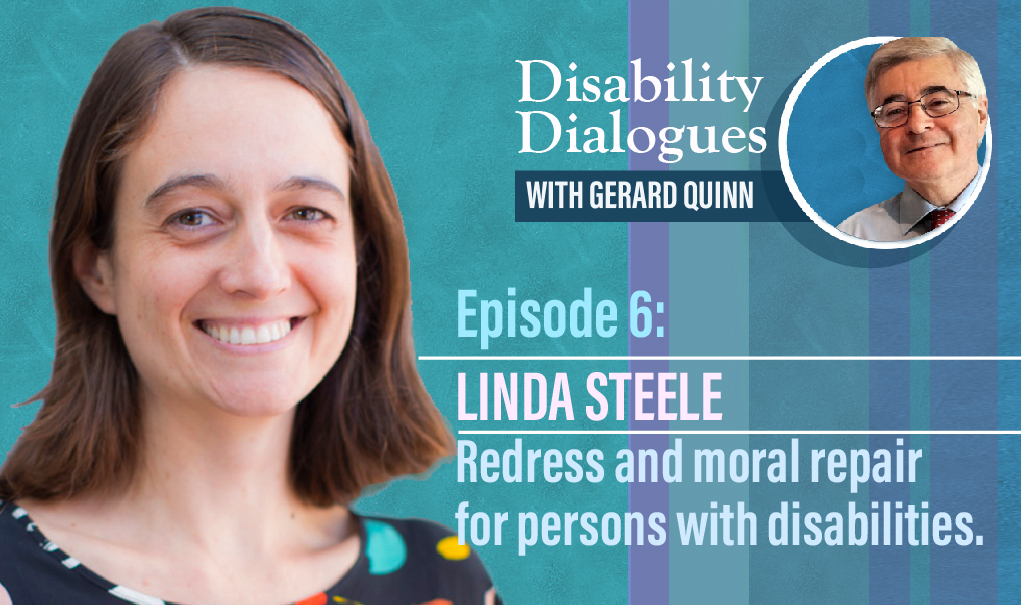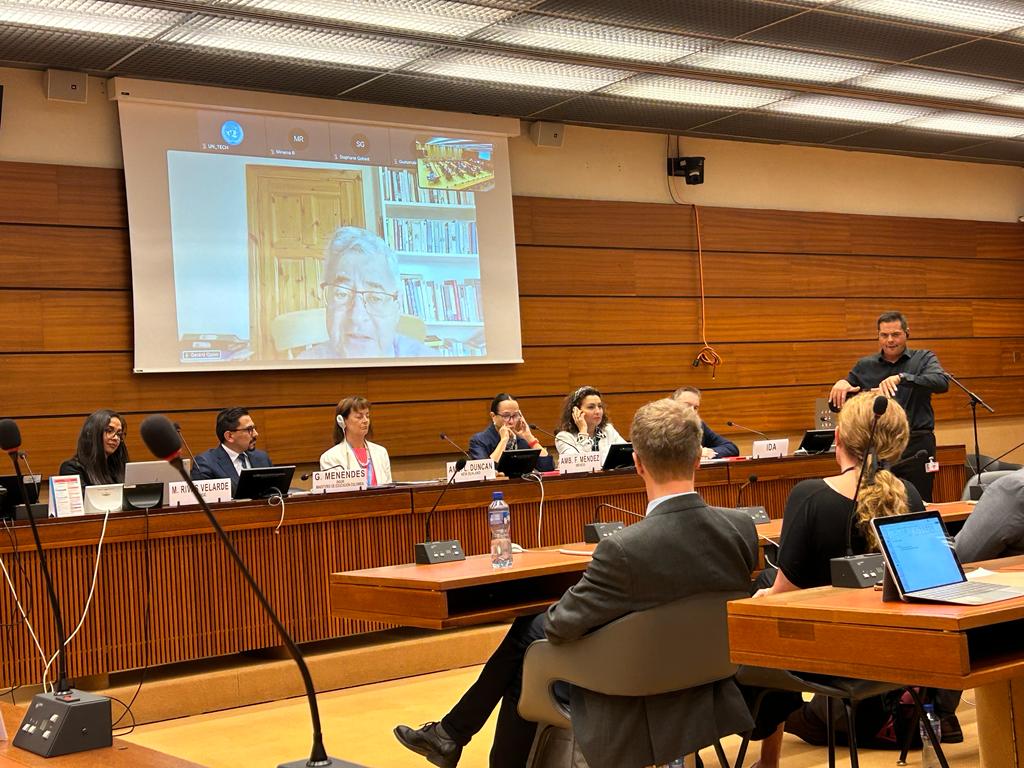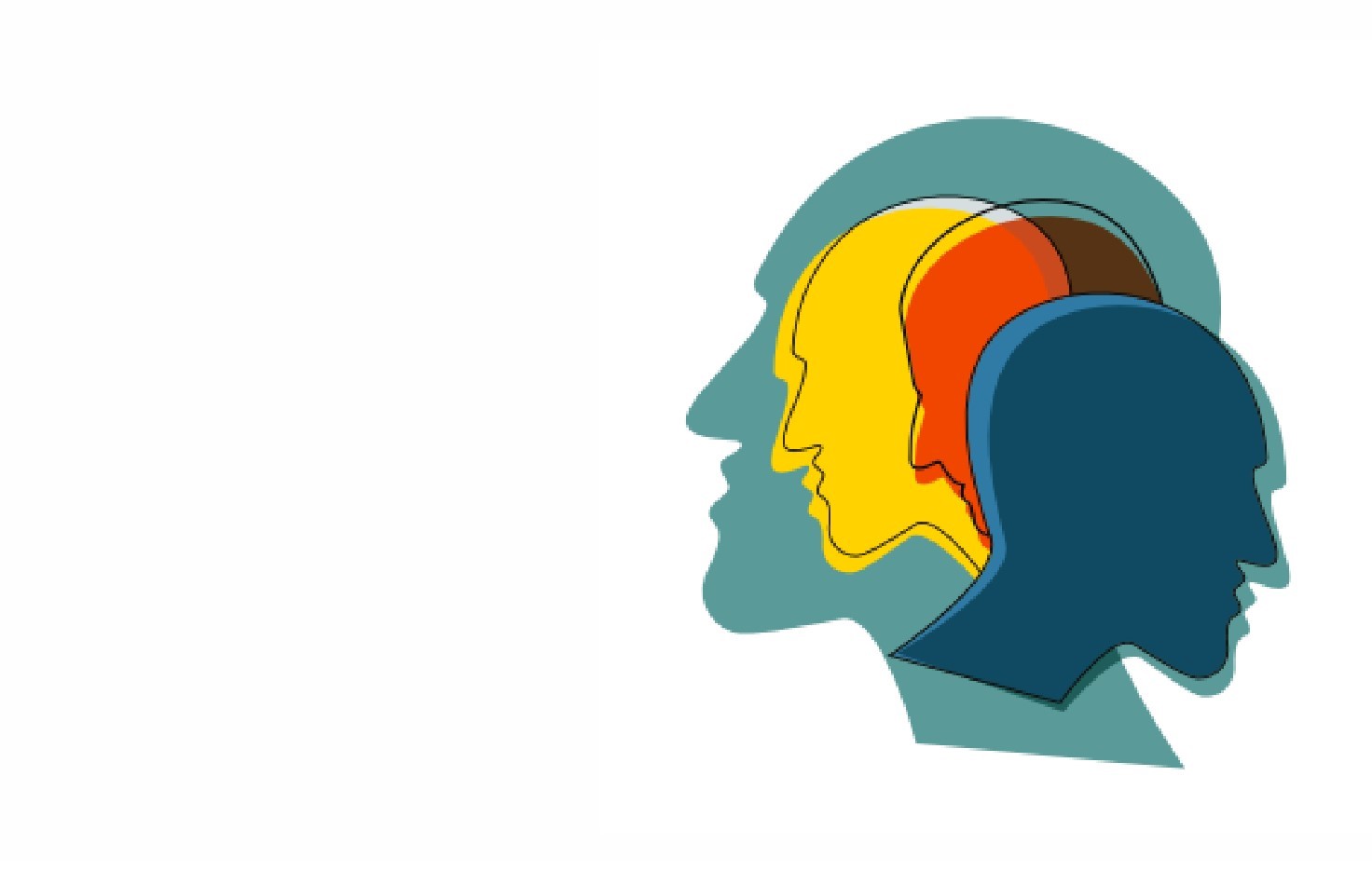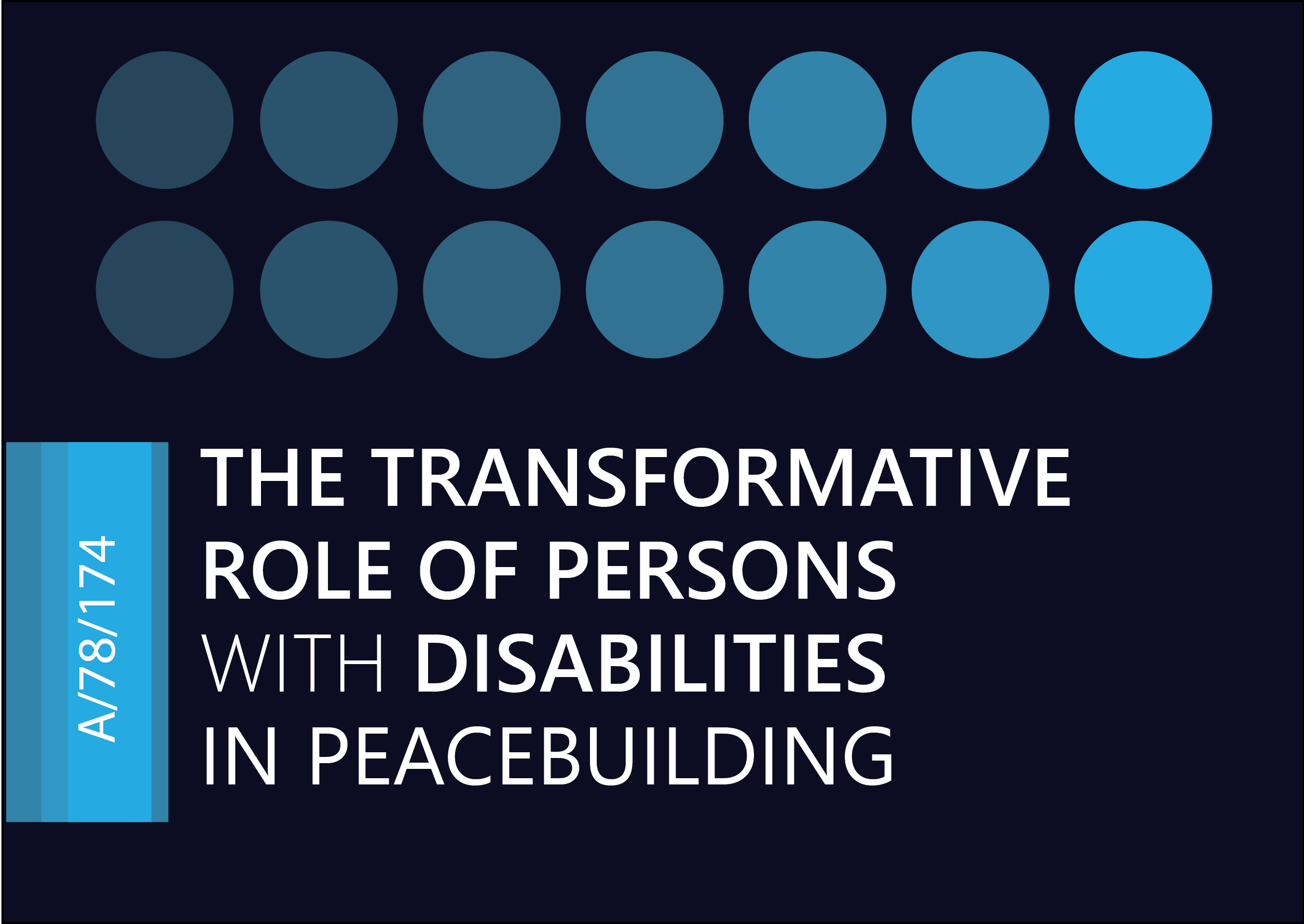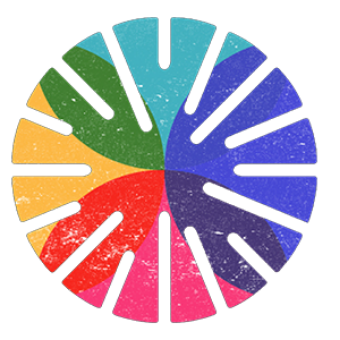The UN system has not ratified the UN Convention on the rights of persons with disabilities because it lacks the legal standing to do so. That left a very big gap. Since 2019, this gap is filled by the UN Disability Inclusion Strategy, which effectively commits the UN system to voluntarily comply with the treaty. This can accelerate change and assist states in their own reform work. On this episode, host and UN Special Rapporteur on the rights of persons with disabilities talks to Gopal Mitra, coordinator of the implementation of the United Nations Disability Inclusion Strategy.
Transcript
Gerard Quinn: Welcome to Disability Dialogues, a series of conversations with leaders and activists from around the world who are advancing the rights of persons with disabilities together. In this series, we will hear from people who are playing a significant role advancing the disability rights agenda in the global system, in their regions, and at home in their own countries. We will explore success stories as well as challenges. Our main guide throughout is the UN Treaty on the Rights of Persons with Disabilities, which has been ratified by nearly every country on the planet. I am your host, Gerard Quinn, UN special rapporteur on the rights of persons with disabilities.
Today, in our very first podcast, I'm delighted to lead off the series by interviewing Gopal Mitra. Gopal coordinates the implementation of the United Nations Disability Inclusion Strategy.
Part 1: The UNDIS and how has it been performing so far.
We all know about the work of bodies like the World Health Organisation to advance disability rights, but now a common framework is in place, linking together the work of all of these agencies across the world. This can accelerate change and assist states in their own reform work. As I mentioned earlier, Gopal coordinates the implementation of the UN Disability Inclusion Strategy across the UN system. Gopal, I like to start interviews by asking our guests to say something about themselves, your earlier life, why and how you came to occupy the post that you currently hold.
Gopal Mitra: Thank you, Gerard. I am from India, though for the last ten years, I've been working in the UN. So I grew up in a small town in India, in the eastern part of India, in a district called Darjeeling, that makes tea. And from my childhood, I was attracted to nature and so on. My parents are simple people, and my mother, she had to... She was kind of a refugee from the partition of India, and so from my father's side. So issues of migration, issues of resettlement, issues of the hardships that people face, that was something we saw in our childhood. And you realise later that those experiences leave a mark on you. At that point, you don't realise. But when you work on things, you realise it. So I started my professional career in the army, in the military, got injured in an explosion and became blind. So when I was undergoing my rehabilitation, I went to an employment officer who was supposed to guide persons with disabilities to employment, to livelihood. And then I told him my experience that in the military I have led people, I have managed complex operations, logistics and so on. And I told him that, “look, now I'm blind, but I want to still continue working”. What do you think are possible avenues that I can try, given my background, given my experience? He told me, “Gopal, you are newly blind, so I would really like to like to be honest with you so that you don't get disillusioned. There will be setbacks. So I would recommend that you take up basket weaving or cleaning chairs”. So that was the options that he suggested to me. And I thought... And I felt very sorry. I don't know whether I have to feel sorry for him or sorry for me. So then I joined the local disability group in my town and then I came to know of people and started working. And that's how I slowly got into into disability work. But before that, I would like to tell an interesting thing. In my college I started to volunteer with an adventure club. And I was not a person with disability at that time. And that adventure club annually organising an adventure camp for young people with disabilities. So that was my first exposure to the capacities to what persons with disabilities were capable of. That gave me a glimpse. So when I became blind, I think that experience also helped me through my rehabilitation: the mental adjustment, the physical adjustments and so on. So that's how I joined and slowly found myself in the UN.
Gerard Quinn: So Gopal, you have now ended up coordinating the implementation of the United Nations Disability Inclusion Strategy. Can you tell us a little bit about the origin of that strategy? Whose idea was it and how was it put in place?
Gopal Mitra: You see, the UN Disability Inclusion Strategy was launched in June 2019, but it was the result of several years of work before that by many people. But two important aspects, I think, which led to the United Nations Disability Inclusion Strategy is the momentum that was generated, or that has been generated through the implementation of the Convention on the Rights of Persons with Disabilities and the implementation of the Sustainable Development Goals, which has explicit references to persons with disabilities across several goals and targets. And as the UN was also going through reforms, the disability movement organisations or persons with disabilities, the International Disability Alliance, and I would also like to mention the Special Rapporteur on the Rights of Persons with Disabilities started highlighting this to the UN leadership. As well, there was also a call from those of us working within the system, and I think the Secretary General and the Deputy Secretary General took the suggestions extremely positively, and they were personally committed to see that the UN is fit for purpose on disability inclusion. So in 2018, the Secretary General commissioned an institutional review on disability inclusion for the whole of the UN. The review found that though the UN system, the United Nations system, has been working on disability inclusion for a long time, there was no shared framework which could strengthen coordination. Also, no particular UN agency or entity was responsible for it. Given the cross-cutting nature of disability inclusion and that it applies to both programmatic aspects as well as internal operations, it was suggested that along the lines of the Gender System Wide Action Plan, a system wide action plan is also developed to strengthen the UN's work on disability inclusion.
Gerard Quinn: Thank you very much Gopal. It's very gratifying to learn of the instrumental role of my predecessor, Catalina Devandas, in helping to push it forward. Gopal, the UN Disability Inclusion Strategy looks very technical. It's a rather long document, but could you break it down into its component parts for the benefit of our listeners?
Gopal Mitra: Yes, of course. Let me mention some of the core or key aspects. First of all, the Strategy, it consists of a policy and an accountability framework. The policy outlines the overall vision, the high level commitment of the United Nations towards disability, inclusion and inclusion of persons with disability. And the accountability framework is where the teeth of the strategy lies. The strategy covers all the three pillars of the UN's work: Development, Human Rights and Peace and Security. The rationale is that as the UN, when we are talking about including persons with disabilities in our programs, we also have to make the UN itself an inclusive workplace for persons with disabilities, right? So the accountability framework, as I said, is where the teeth of the strategy lies. Now, let me come to the indicators. What does the strategy measure? So, Strategy measures the UN's performance under four core areas. The first core area is "leadership, strategic planning and management". So what it does is that it has benchmarks on whether the leadership of the UN is championing visibility inclusion, because leadership support is extremely important to accelerate progress on a cross cutting area like disability inclusion. Whether the strategic plans, which are the core documents based on which an organisation operates, whether the strategic plan of UN agencies, entities and country teams, they are integrating disability inclusion or including persons with disabilities in a meaningful way. And the budgets being catering to accessibility and inclusion. The second core area of the standard of the accountability framework is “inclusiveness”. It's very fundamental. It has indicators on whether the UN is consulting organisations of persons with disabilities or not, whether our physical and digital infrastructure and all that we are doing: are we considering accessibility or not? Another important area that is covered is “procurement”. Whether the goods and services products that the UN is procuring, is it considering accessibility and inclusion. And also whether reasonable accommodation, which is a poor entry discrimination measure, whether the UN system is providing that or not. So the third core area of the Strategy is "programming". So it has indicators on whether our programs and projects are disability inclusive or not. It's not only disability specific projects, right? It's our mainstream projects with a country program document, whether the evaluations that we undertake are integrating the disability inclusion in a meaningful manner or not. And the last four area is "organisational culture". Under that the Strategy measures employment of persons with disabilities within the UN system. It measures whether our communication, whether they are representing persons with disabilities in a meaningful manner or not, whether the UN has put in place measures to build knowledge capacity and awareness of all its staff on disability enclosure or not.
Gerard Quinn: So I know it's very early days Gopal, but you're very closely involved in monitoring the implementation of the framework of the Strategy across the UN system. I'm wondering, can you tell us some of the highlights of that analysis so far? Are there any surprises? Do you, for example, have any sort of league table? And if so, who's winning the league table within the UN system at the moment?
Gopal Mitra: That's a great question. So, as I said, the UN agencies, entities and country teams, they have been reporting annually on the Strategy. So, from 2019 to 2021, the performance has improved from 16% to 30%. You can say nearly, it's a 100% progress. But at the same time, there are two aspects. After three years, the UN system is still not meeting 70% of the benchmarks on disability inclusion that has been established by the Strategy. So, on disability inclusion as the UN system, we have started from a very low base, a base of 16% of indicators that are being met. The Strategy has provided a framework, a roadmap to make progress from 16% to 30%, nearly 100%. And despite the disruptions caused by Covid 19 pandemic. At the same time, there is a long way to go. That is the overall picture. Within the UN system, we see that agencies, funds and programs, they are doing better than others. Peacekeeping or peace operations, as a group, I think it's still disability inclusion remains an emerging area of work, yes. We know the agencies who we traditionally think of when we talk about disability inclusion: World Health Organization, International Labor Organization, Office of the High Commission for Human Rights, UNICEF, UNDP - these organisations have further stepped up their work on disability inclusion. But what is equally interesting is that because of the implementation of the strategy across the UN system, a lot of UN agencies which we do not automatically think would implement or integrate disability inclusion have started working on the area. I'm talking about the Food and Agricultural Organization. They have stepped up their work so much. And just on a very interesting note: last week we got a message from the UN Office of Outer Space and they want to implement the Strategy. They say they have a lot of programs on raising awareness of people on space programs and they want to make all those visibility inclusive. You see. So what I'm trying to say is that many agencies we generally don't think of naturally when we talk about disability inclusion have started considering accessibility and inclusion of persons with disabilities due to the strategy. I'll stop there.
Gerard Quinn: You must, as a former military man, be somewhat disappointed by the low take up so far, at least in peacekeeping and perhaps peace building. And hopefully that's an area in which we can see a lot of progress in the next period ahead. You mentioned the area of space, and I did notice about six or seven months ago, the next intake of training NASA astronauts. They were actually looking for people with disabilities, which was quite fantastic. Just by way of personal experience, when I used to work in the European Commission on disability issues, and we changed our policy in the mid 1990s, the very first application was with respect to the design of cabs for tractors on farms. And as it turns out, that was incredibly important because a lot of farmers have accidents on the farm and are disabled. And therefore, it was incredibly important that farming cabs would be designed in an ergonomic manner, which was amazing.
Part 2: crises, and implementation of the UNDIS
Gerard Quinn: So right now, Gopal, there are many crises facing the world. As you know, we have too many armed conflicts: Ukraine, Yemen, Congo, to name but a few. And we're experiencing climate change, which will likely lead to mass displacements of people, and you and your family have experienced that many decades ago. Would you say that the Disability Inclusion Strategy is beginning to make a difference in the preparedness and responses of the UN system to these displacements and crises?
Gopal Mitra: There are two aspects, two sides, if I may say, that we see emerging from the Strategy. One is humanitarian agencies. We see their performance - of humanitarian agencies - higher than the system average. The big humanitarian agencies - World Food Program, High Commissioner for Refugees, UNICEF, and so on, IOM International Organization for Migration, they have really stepped up there. We see that the humanitarian needs overview, the humanitarian response plans, the post disaster needs assessments, and so on, are increasingly factoring in inclusion of persons with disabilities. Most agencies have invested in capacity, which is critical to accelerate progress. In terms of the peace operations, I totally see why you mentioned that. It's a little discouraging. At the same time, what I would mention is that we see a lot of interest and enthusiasm among peace operations to undertake this work. In 2019, when the reporting was done, twelve peace operations reported. Now, in 2020, 18 peace operations reported. So there is an increase in the number of peace operations that are implementing and reporting on the strategy. There are already several good practices that are emerging. For example, in Somalia, the police operation is working closely with the Disability Department, with organisations of persons with disabilities, building capacity and so on. In Iraq, we know that peace operation work closely with organisations of persons with disabilities to ensure that during the last election, persons with disabilities, it was accessible for persons with disabilities like this.
Gerard Quinn: Thank you, Gopal. And we in the UNSR team, the Special Rapporteur team, have a pronounced interest in armed conflict and disability. And for our most recent report, on the Laws of War and Disability, we conducted many regional consultations around the world, bringing together military authorities with civil society organisations. What we discovered was a huge appetite for these kind of conversations and dialogues. And we aim to follow through with this with similar regional consultations in the whole area of peace building and disability. So from your experience so far, do you see a similar appetite for all sides to reach out in the peacekeeping apparatus to persons with disabilities?
Gopal Mitra: Yes, indeed, we see that. And when we reach out to our colleagues working in these operations - and they're working under very challenging situations, right - we see definitely an appetite, an interest to take this forward. What we have to also match is the capacity. So we are trying to organise how to build the capacity, the technical knowledge, the awareness that is required.
Gerard Quinn: one of the aspects about the Strategy that is of particular interest to me and our team is the positive role of public procurement to actually, as it were, purchased the right kind of justice and equity for people with disabilities. Could you maybe say a word or two about how that's progressing within the UN system?
Gopal Mitra: It's a very interesting area that came out of the first reporting on the Strategy showed that procurement or consideration of disability inclusion in the procurement was one of the lowest performing indicators, right? At the same time, across many agencies, entities or colleagues, there was the realisation that look, when we are talking about financial crunch, we are talking about a difficult financial climate. Funding on disability inclusion may be difficult, but what colleagues realise is that what we are procuring, that money is already there. So if we are able to factor in disability inclusion and accessibility in that, we could really move the needle on inclusion. So the UN procurement network developed in 2020 the first guidelines on disability inclusive procurement. And now for the last two years, the guidelines are being implemented and we are seeing some good action. We have seen UN agencies incorporating accessibility criteria into their tenders, request for proposals and so on. We see also some work starting on how we can procure from disability inclusive suppliers, right? We have seen that the UN global marketplace website or the portal where the tenders... which are used for procurement, they have been made more accessible and so on. So we are seeing more and more examples of UN agencies putting more attention on procuring, for example, assistive devices, of course, that is, specific disability related equipment or product.
Gerard Quinn: Gopal, how can ordinary people on the ground get involved? It's pretty obvious that the UN disability inclusion strategy is incredibly important in reaching out to the furthest tentacles of the United Nations in country. So, for example, how can they interact with their own in country team on the guide on the Inclusion Strategy and more importantly, how can they help you assess compliance with the UN disability strategy?
Gopal Mitra: That's a great question, Gerard. See, the Strategy is technically an internal strategy for the UN, right? But it has many components which makes the UN or put the UN in a better place, a more stronger place to engage with people on disability inclusion. So we see the Strategy providing that space to engage more with people, particularly persons with disabilities and their representative organisation, on a range of issues that the UN works on. That is one part. Second, is... I just mentioned procurement. The Strategy also provides the space or the framework for those who engage with the UN to discuss or to factor in or to consider disability inclusion in a much more concrete manner. For example, all the vendors of the UN, all the companies who supplied the UN, all the people who build our software: the digital portals and so on. I'll just give you an example. At the country level, the cooperation framework is the guiding document. It's the agreement between the UN and the government on how the UN will support or engage with the government on what priorities. We see the persons with disabilities and organisations of persons with disabilities being increasingly consulted in the development of that cooperation framework. And the Strategy provides a framework for that because that is a specific indicator in the UN Disability Inclusion Strategy.
Gerard Quinn: So, just a very practical follow through question. If the UN-in-country-teams report to you, do they typically involve people with disabilities in putting together their own report cards? And how do they reach out to people with disabilities on the ground in this process?
Gopal Mitra: See, it's not to the reporting, but the Strategy. And to even approach the benchmark of the Strategy, the country team has to do at least one consultation with persons with disabilities. For example, in Fiji, the UN country team now has an MoU with the Pacific Disability Forum, right? So we are increasingly seeing these partnerships, both formal and informal. And countries now are proactively reaching out to organisations of local- and national organisations of questions with disabilities. From our side, what we have done last year is we have developed - along with International Disability Alliance and their partners, in collaboration with them -, system wide guidelines on consulting persons with disabilities and their representative organisations.
Gerard Quinn: You mentioned electronic accessibility, web accessibility etcetera. Can you tell us how well is the United Nations doing at the moment and what remains to be done in this regard?
Gopal Mitra: What we are trying to do in the Strategy is in the first years, provide that basic guidance, or establish those guidelines. So Department of Global Communications has issued accessibility guidelines for all UN websites. Of course, it's a journey, right? So new websites which are being developed, or new digital portals, web platforms are increasing. I mean, web accessibility is being considered.
I'll tell you one interesting thing. The UN at the country level is now implementing the Business Operations Strategy. And the Business Operation Strategy includes common services, which the countries are implementing on physical accessibility, digital accessibility, and inclusive human resource services. And there is a good uptake of that. So in the coming years, we also see this improvement continuing and further accelerating.
Gerard Quinn: This is wonderful. I think we've only scratched the surface today, but I think we've done enough to give people a sense of what the line of travel is and what the dynamic of change is within the UN system. So Gopal, thank you so much. You've given up your time so generously this afternoon, and I'm sure many people around the world will directly benefit from this podcast. Thank you so much.
Gopal Mitra: Thank you, Gerard. It was a pleasure as always to speak with you. Thank you so much.
You can follow Gopal on Twitter: @gopalmitra2030, and Gerard: @SR_disability.
For more information about the topics covered in this episode, follow the links on the side menu.
Do get in touch with us with ideas about topics or potential interviewees.
Well, that's it for this episode of Disability Dialogues. The executive producer is Hernán Bonomo. Original sound design and editing is by Jeremy Bouquet and Thomas Kusberg from Bulle Media.

